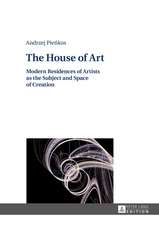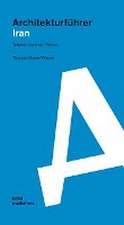The Fortifications of Pompeii and Ancient Italy
Autor Ivo Van der Graaffen Limba Engleză Paperback – 30 sep 2020
This study redefines Pompeii’s fortifications as a central monument that physically and symbolically shaped the city. It considers the internal and external forces that morphed their appearance and traces how the fortifications served to foster a sense of community. The city wall emerges as a dynamic, ideologically freighted monument that was fundamental to the image and identity of Pompeii. The book is a unique narrative of the social and urban development of the city from foundation to the eruption of Vesuvius, through the lens of the public building most critical to its independence and survival.
| Toate formatele și edițiile | Preț | Express |
|---|---|---|
| Paperback (1) | 389.05 lei 6-8 săpt. | |
| Taylor & Francis – 30 sep 2020 | 389.05 lei 6-8 săpt. | |
| Hardback (1) | 767.80 lei 6-8 săpt. | |
| Taylor & Francis – 6 sep 2018 | 767.80 lei 6-8 săpt. |
Preț: 389.05 lei
Nou
Puncte Express: 584
Preț estimativ în valută:
74.45€ • 77.89$ • 61.84£
74.45€ • 77.89$ • 61.84£
Carte tipărită la comandă
Livrare economică 02-16 aprilie
Preluare comenzi: 021 569.72.76
Specificații
ISBN-13: 9780367665548
ISBN-10: 0367665549
Pagini: 316
Dimensiuni: 156 x 234 x 27 mm
Greutate: 0.45 kg
Ediția:1
Editura: Taylor & Francis
Colecția Routledge
Locul publicării:Oxford, United Kingdom
ISBN-10: 0367665549
Pagini: 316
Dimensiuni: 156 x 234 x 27 mm
Greutate: 0.45 kg
Ediția:1
Editura: Taylor & Francis
Colecția Routledge
Locul publicării:Oxford, United Kingdom
Cuprins
Contents;List of Figures ;List of Color Plates;Acknowledgements;Introduction ;1 Prolegomena to the City Walls of Pompeii;The city walls and the urbanization of Pompeii;Excavating the fortifications;2 Defense and the Genesis of the Community;The fortifications and the city;The Orthostat wall;The Altstadt as nucleus to Pompeii;Walls, gods, politics and the early community;3 A New Enceinte for a New City;Reconstructing the Samnite Circuit;Achieving an ornamental effect;Gates and towers in the first Samnite circuit;Upgrading the defenses;Emphasizing the transition through the fortifications;Reaching new heights: opus incertum and the next phase of construction;New elements to old gates;The towers;4 Establishing an Image for Samnite Pompeii;Calibrating the image of the expanding city;Building materials and the image of Pompeii;Samnite Pompeii defines its image;Fortifications and the urban network;The image of the high Samnite city;Patronage and display at the walls;Naming the fortifications;5 The Fortifications and the Roman Colony ;The walls of the colony;Reconstructing the walls;The development of the gates;Change and continuity in the towers;The changing role of the fortifications;6 The Fortifications and Roman Pompeii;Adjusting the civic image;The significance of an entertainment district: the fortifications, the amphitheater, and the palaestra;Claiming public land;Fortifications and the tomb: dialogues in social order;City walls in the domestic sphere: reflections of urban and social ideals;7 The Fortifications of Pompeii in their Broader Context;Military tactics influences and design;The closest parallel to the Pompeian circuit;Masonry, fortifications, and the definition of a city;Polychrome masonry and city walls;Towers and the ornamentation of the city;Patronage and the concept of the city;8 Fortifications and Religion;The development of Venus Pompeiana;Religion, fortifications, and identity outside of Pompeii;Patronage, religion and power at the gates;Glossary ;Bibliography ;Index
Notă biografică
Ivo van der Graaff is Assistant Professor of Art History at the University of New Hampshire, Durham. He earned his MA in Mediterranean Archaeology from the University of Amsterdam and his PhD in Art History from the University of Texas at Austin, with a focus on Greek and Roman Art and Architecture. Dr. van der Graaff has participated in archaeological research projects in the Netherlands, Belgium, Greece, and Italy. He co-directs and collaborates on projects examining the ancient Bay of Naples and Etruria.
Recenzii
"The book provides the reader with the evidence for Pompeii’s fortifications and the author is to be commended for undertaking the challenge of making this important feature accessible to advanced students ... there is an admirable amount of work in this book that provides a way into the subject of defences at Pompeii that – after the paved streets – were the city’s largest public monument." - Ray Laurence, Macquarie University, Australia, Bryn Mawr Classical Review 2019
"The Fortifications of Pompeii and Ancient Italy is a valuable read for anyone interested in the history of ancient Italy or in that of fortification and urban planning and the architectural influences on culture and society." - A. A. Nofi, The NYMAS Review
"[T]he book demonstrates, in an articulated and sustained manner, the potential that walls hold for our broader understanding of an ancient town. This is one of the first book-length studies to take seriously the claim that circuit walls hold as much, if not more, civic importance as they do military. One hopes to see the volume inspire imitators." - Seth Bernard, University of Toronto, Canada, Journal of Roman Archaeology 2019
"[T]he book offers a thorough and up-to-date study of the architectural development of Pompeii's fortifications, while placing them in a wider Mediterranean context." - Saskia Stevens, BABESCH, 2021
"The Fortifications of Pompeii and Ancient Italy is a valuable read for anyone interested in the history of ancient Italy or in that of fortification and urban planning and the architectural influences on culture and society." - A. A. Nofi, The NYMAS Review
"[T]he book demonstrates, in an articulated and sustained manner, the potential that walls hold for our broader understanding of an ancient town. This is one of the first book-length studies to take seriously the claim that circuit walls hold as much, if not more, civic importance as they do military. One hopes to see the volume inspire imitators." - Seth Bernard, University of Toronto, Canada, Journal of Roman Archaeology 2019
"[T]he book offers a thorough and up-to-date study of the architectural development of Pompeii's fortifications, while placing them in a wider Mediterranean context." - Saskia Stevens, BABESCH, 2021
Descriere
This book places fortifications at the centre of the historical development of the city and argues that Pompeii’s walls constituted a dynamic and ideologically freighted monument central to the image of the city and its identity. Drawing on archaeological, social, historical, visual, and literary evidence, this study, the first of its kind, ca


















